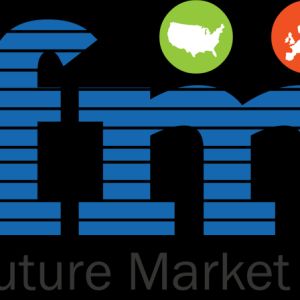Confectionery Market Drivers is Responsible to for Increasing Market Share, ForePosted by Pareesh on June 8th, 2018 The confectionery market is a steadily growing market with rising sales in emerging economies. Confectionery products are typically low in nutrients and high in calorie content. Increasing incidence of lifestyle diseases such as diabetes, hypertension, and heart diseases coupled with rising health awareness has given rise to new product segments such as sugar-free confectionary products. Rise in demand for sugar-free, low-calorie, and organic products is projected to boost growth of the market. Sugar substitutes such as sorbitol, mannitol, maltitol and lactitol among others are used in confectionery. Chocoladefabriken Lindt & Sprüngli A.G. and The Hershey Company are some of the players offering sugar free chocolates, mints, toffees, candies, and jellies. The biggest restraint to the confectionery market is the rise in raw material costs. For example, cocoa prices have been fluctuating over the past few years due to erratic production and supply demand imbalance. According to the International Cocoa Organization (ICCO), prices have fluctuated between US$ 2000/ton and US$ 3000/ton since 2014. The ICCO recommends that producers either reduce the volume of chocolate products or raise prices to achieve profitability in such market conditions. Request a sample copy of this report: https://www.coherentmarketinsights.com/insight/request-sample/1444 Confectionery Market Taxonomy: On the basis of product type, confectionery market is segmented into:Sugar Confectionery,Hard-boiled Sweets,Caramels and Toffees,Gums and Jellies,Medicated Confectionery,Mints,Others,Chocolate Confectionery,Bagged,Self lines,Boxed Assortments,Count line,Seasonal Chocolate,Tablets Gum:Chewing Gum,Bubble Gum On the basis of distribution channel, confectionery market is segmented into:Supermarkets,Hypermarkets,Online,Convenience Stores,Specialty Stores,Others On the basis of product type, chocolate confectionery is expected to be the dominant segment over the forecast period. According to Coherent Market Insights, the global chocolate market was valued at US$ 99.60 billion in 2016 and is expected to grow at a CAGR of 6.6% over the forecast period. On the basis of distribution channel, hypermarkets and supermarkets are projected to be the two largest segments over the forecast period. A broad product display and tactile buying experience has retained the market dominance of offline stores. Moreover, food & beverages sales, which are inclusive of confectionery have not witnessed much growth in the online distribution channel segment due to issues such as customers being unable to gauge product quality and freshness. To know the latest trends and insights prevalent in this market, click the link below:https://www.coherentmarketinsights.com/ongoing-insight/confectionery-market-1444 Global Confectionery Market Outlook: North America is the largest confectionery market region with the U.S. being a prominent consumer of confectionery products. One of the major drivers for this market is the seasonal demand for confectioneries. There is a high demand for candies and chocolates, as they are a vital part of the U.S. festivals. The consumption of chocolate and other confectionery treats is associated with many events and holidays throughout the year such as Valentine's Day, Halloween, Easter, Thanksgiving, and Christmas. The sales of confectionery products in the U.S. are observed to be high during such festivals. Also, the urban population is more inclined towards consumption of confectionery compared to its rural counterparts. According to the U.S. Census Bureau, over 80% of the population resided in urban settings in 2017. According to UN sources, 82.3% of the population is urban in Canada. These factors are expected to contribute to the market growth in the region. Furthermore, artisanal chocolates, which are manufactured by local manufacturers are in high demand due to perception of ethical sourcing of ingredients and healthier alternative to products from major market players. Europe is also among the leading consumers and producers of confectionery products. In Switzerland, sales of premium chocolate continued to rise in 2017. Swiss consumers were more inclined towards high quality confectionery products, which incorporate organic, fair-trade chocolate and/or chocolate with a high cocoa content. Leading players such as Chocolat Bernrain A.G. and Max Felchlin A.G are offering organic chocolates in the market. In 2016, the total quantity of Swiss chocolate sold in the domestic and international market increased by 2.3% to 185,639 tons from the previous year. According to Coherent Market Insights, chocolate confectionery segment was the largest segment in France in 2017. In 2016, a thriving tourism industry, which hosted over 80 million tourists according to French government sources coupled with high local demand is expected to further bolster the market for chocolate confectionery in the country. Market players operating in France such as Chocoladefabriken Lindt & Sprüngli AG (Lindt), Nestle S.A., and Mondelez International have reaped the benefits of the tourism industry. Lindt reported a sales growth of 4.8% in 2017 over the previous year and plans to invest US$ 32.3 to expand manufacturing of chocolates in Switzerland. The crucial strategies adopted by the market players include acquisitions, mergers, new product developments, capacity expansions, and flavor differentiation that helps to capture market share. In 2017, Hershey’s acquired Amplify Snack Brands to create a broader portfolio of brands by merging Hershey’s snack mix and meat snacks products with Amplify’s products such as Skinny Pop, Tyrrells, Oatmega, and Paqui. Leading players in the market include Nestlé S.A., Mars Inc., Ferrero Group, Meiji Co. Ltd, Candyrific, Elmer Chocolate, Mondelez International, Grupo Arcor, and The Hershey Company. Like it? Share it!More by this author |


